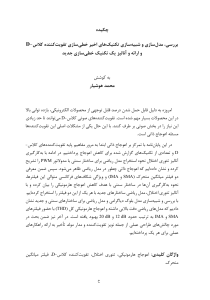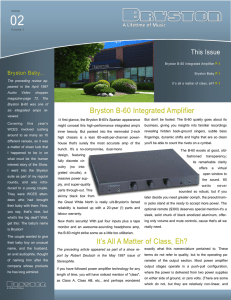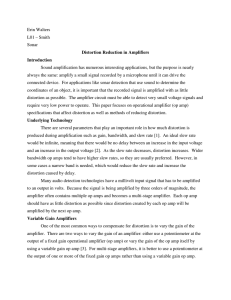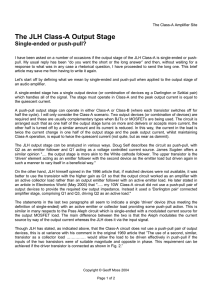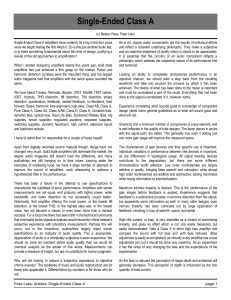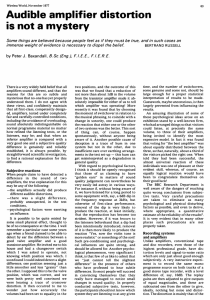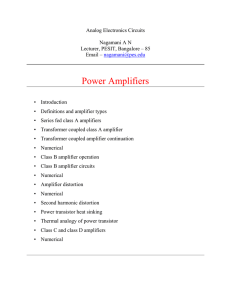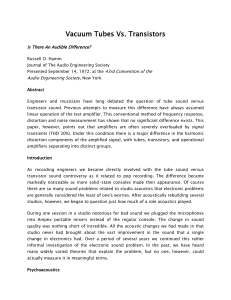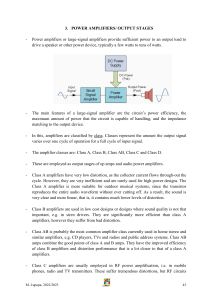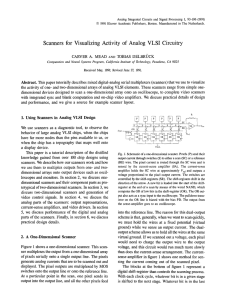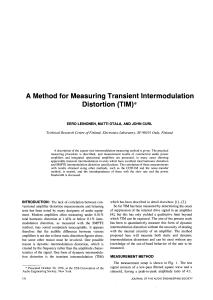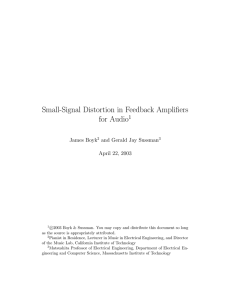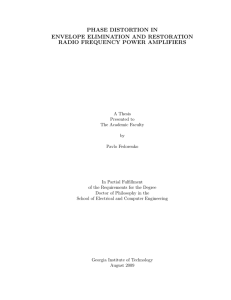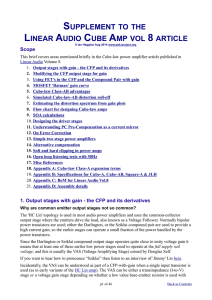Unit - VI Power Amplifiers
advertisement
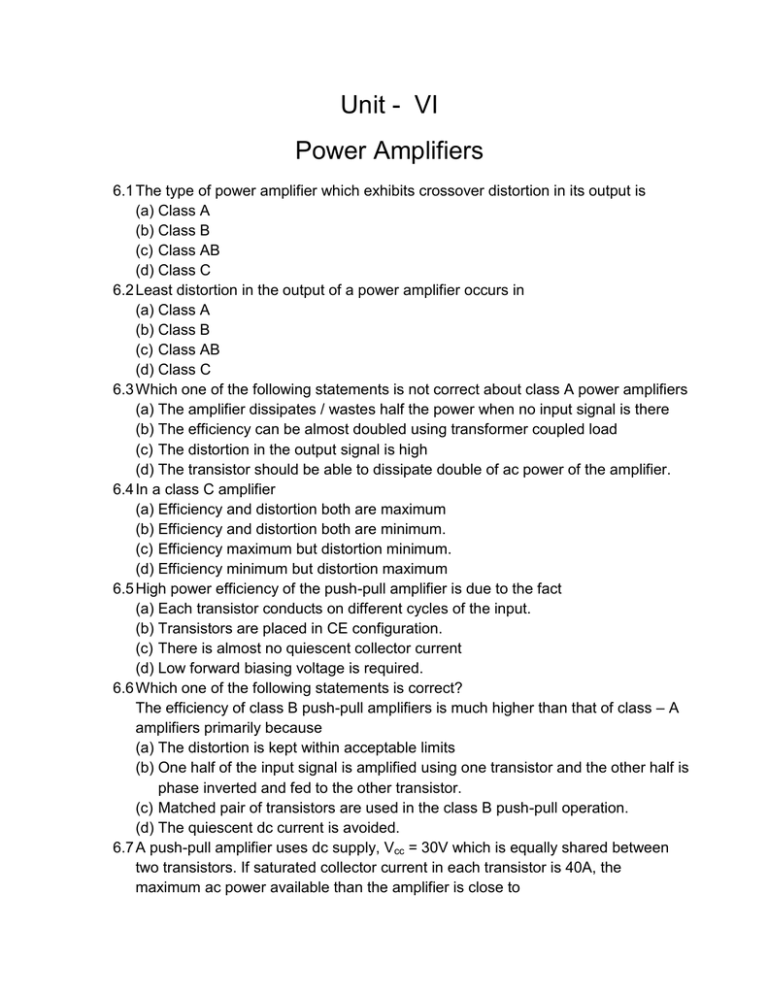
Unit - VI Power Amplifiers 6.1 The type of power amplifier which exhibits crossover distortion in its output is (a) Class A (b) Class B (c) Class AB (d) Class C 6.2 Least distortion in the output of a power amplifier occurs in (a) Class A (b) Class B (c) Class AB (d) Class C 6.3 Which one of the following statements is not correct about class A power amplifiers (a) The amplifier dissipates / wastes half the power when no input signal is there (b) The efficiency can be almost doubled using transformer coupled load (c) The distortion in the output signal is high (d) The transistor should be able to dissipate double of ac power of the amplifier. 6.4 In a class C amplifier (a) Efficiency and distortion both are maximum (b) Efficiency and distortion both are minimum. (c) Efficiency maximum but distortion minimum. (d) Efficiency minimum but distortion maximum 6.5 High power efficiency of the push-pull amplifier is due to the fact (a) Each transistor conducts on different cycles of the input. (b) Transistors are placed in CE configuration. (c) There is almost no quiescent collector current (d) Low forward biasing voltage is required. 6.6 Which one of the following statements is correct? The efficiency of class B push-pull amplifiers is much higher than that of class – A amplifiers primarily because (a) The distortion is kept within acceptable limits (b) One half of the input signal is amplified using one transistor and the other half is phase inverted and fed to the other transistor. (c) Matched pair of transistors are used in the class B push-pull operation. (d) The quiescent dc current is avoided. 6.7 A push-pull amplifier uses dc supply, Vcc = 30V which is equally shared between two transistors. If saturated collector current in each transistor is 40A, the maximum ac power available than the amplifier is close to (a) 120 w (b) 60 w (c) 40 w (d) 30 w Answers: 6.1 (b) 6.7 (d) 6.2 (a) 6.3 (c) 6.4 (a) 6.5 (c) 6.6 (d)


